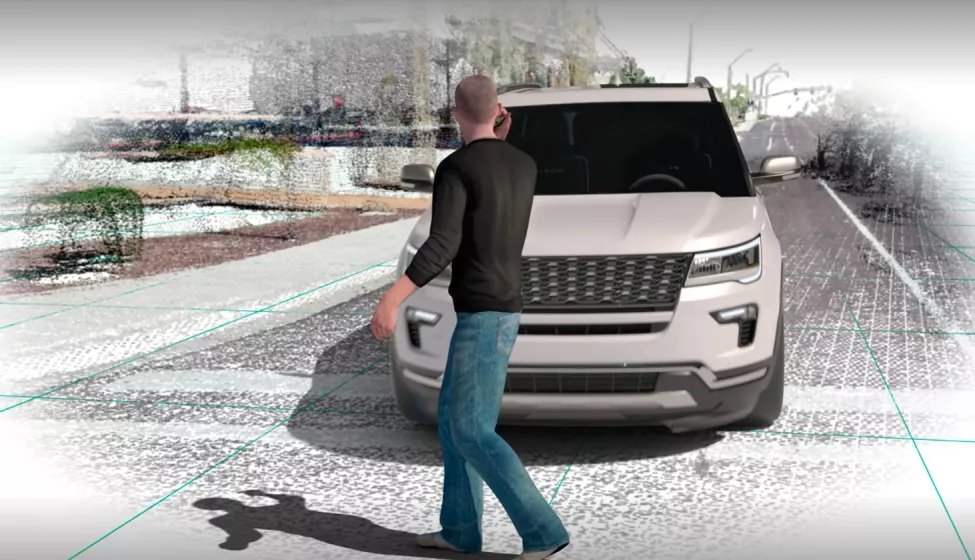October 10, 2019
Autonomous vehicles (AVs) are now in research phases, being tested on public roadways, and will be increasingly exposed to traffic interactions on public roads with conventional road-users, including pedestrians and cyclists.
High-performing self-driving vehicles have an inherent edge in the safety domain compared to vehicles driven by average humans and can potentially provide a safer experience, both for occupants seated inside the vehicles and for vulnerable pedestrians on the road, so long as the vehicles' navigation, piloting, surveying, data processing, and control actuation software and hardware systems operate as intended. The cost of error is high, as a human backup safety driver might not be available or able to control the vehicle in the event of a pedestrian proximity detection failure. Pedestrians and cyclists are entitled to the same road use rights as are human drivers of conventional vehicles; therefore, AV providers need to undertake well-planned initiatives to ensure pedestrian/cyclist safety in sharing roadways with AVs.
Evolution of Occupant Safety, Increased Pedestrian Fatalities
Since automotive engineers developed the first vehicle restraint systems in the mid-1930s, passive safety — pertaining to the safety of vehicle occupants under severe crash and impact — has seen continual and progressive advancement. Automotive manufacturers have introduced measures across all vehicle categories to make them safer for diverse occupants, ranging from seatbelts and airbags to advanced braking systems and safety windshield/window glass, to name only a few. Although these features have made vehicle occupants safer than before, road safety needs to be improved further for bicyclists, motorcyclists, pedestrians, skateboarders, operators of Segways or similar devices, wheelchair users, and sight-impaired persons using walking aids.
In highly populated cities in North America that have labyrinths of pedestrian crossing intersections or numerous commuters on foot (such as San Francisco or New York), this is especially a prime concern. In the past decade, the number of pedestrians struck and killed in the United States has increased by 35%, even though overall traffic fatalities decreased by 14%. In 2018, pedestrian fatalities remained at a 25-year high for a second consecutive year.
Gaps in Regulatory Framework for Pedestrian Safety Assessment
National Highway Traffic Safety Administration (NHTSA) mandates are essential to establishing an all-pervasive safety framework with scrupulous automated safety benchmarks to evaluate the efficacy of exploratory automated driving features available to customers. Given the current lack of comprehensive safety regulations, the issue of pedestrian safety can only be expected to be aggravated in the future, unless addressed in a timely manner by automakers on their own initiative. In the wake of stringent international pedestrian safety standards — such as European homologation as well as European new vehicle assessment requirements introduced earlier this year — coupled with the fact that pedestrian fatalities are becoming a growing concern in North America, American regulations might follow and pedestrian protection may become a mandatory individual safety assessment category in the United States in the future. If that happens, automakers need to be ready. In the interim, they should do their due diligence in decreasing pedestrian-related fatalities on roads by introducing necessary modifications in the vehicle design and production phases.
Active vs. Passive Techniques, Injury Assessment, and Collision Scenarios
Pedestrian safety can be maximized through a combination of active and passive techniques. Improving pedestrian safety requires (1) ensuring pedestrian detection, (2) deploying appropriate restraints, such as an active hood (when applicable), and (3) comprehensive pedestrian injury assessment in the event of a collision. Pedestrian detection requires a considerable amount of groundwork wherein the AV provider needs to demonstrate the ability to precisely distinguish an oncoming pedestrian from other moving or stationary objects, such as a ball, a small animal, a piece of a vehicle, or a sign pole, since an inaccurate detection that triggers pedestrian restraints can end up working against the underlying mission of promoting safety, by potentially impairing drivers' vision as well as their navigating capabilities. This requires a careful calibration of the sensing architecture and, in some cases, adjustments to existing commercial systems to achieve full detection capability in the desired range.
Active safety features such as automatic emergency braking (AEB) and object avoidance can help reduce pedestrian collisions following successful detection. In the event that active safety features are unsuccessful, it is important that automakers account for and demonstrate passive safety to a reasonable threshold and ensure pedestrian injury avoidance.
Designing pedestrian restraints and augmenting vehicle structure for improved pedestrian safety requires a careful evaluation of the vehicle front structure (as a starting point) to ensure that any modifications required do not conflict with crash requirements for other mandatory occupant safety test modes, such as frontal or moderate overlap crash scenarios.
Automakers can make vehicles safer for pedestrians by customizing vehicle structure during initial design phases or through specially implemented add-ons in preexisting vehicle configurations.
In Europe, where pedestrian protection is required to meet typical vehicle homologation standards, three main pedestrian injury types are assessed in frontal vehicle impact scenarios: head, lower-leg, and upper-leg injuries. Although these three injury types are not a comprehensive summation of the worst possible injury that a pedestrian could incur during front-facing collision with a vehicle, they offer a good starting point for analyzing pedestrian biomechanics. These body regions inevitably engage with the vehicle during an impact event and with the roadway in a secondary impact, and carry a high likelihood of sustaining severe damage from a typical vehicle front-end structure, unless designed with pedestrian safety in mind. For comprehensive safety, additional (if less common) injury scenarios and the associated kinematics of the human body could also be reviewed as part of due care — e.g., when a pedestrian hits a vehicle at regions other than the frontal section (such as the side rails, window glass, or the rear windscreen of the vehicle).
How Exponent Can Help
Exponent can provide emerging autonomous vehicle companies and traditional automakers with highly detailed pedestrian safety solutions. We offer in-house numerical simulation capabilities using finite element methods for design safety evaluation at a component, subsystem, or vehicle level, as well as test capabilities to assess and improve pedestrian protection performance, with a focus on introducing minimal manufacturing changes to vehicle configurations whenever possible. This requires collaboration with the manufacturer on a case-by-case basis. The solution space will be driven by our in-depth expertise in pedestrian kinematics and biomechanical injury assessment, as well as understanding of the key vehicle structural factors contributing to the severity of an unavoidable pedestrian impact scenario.

